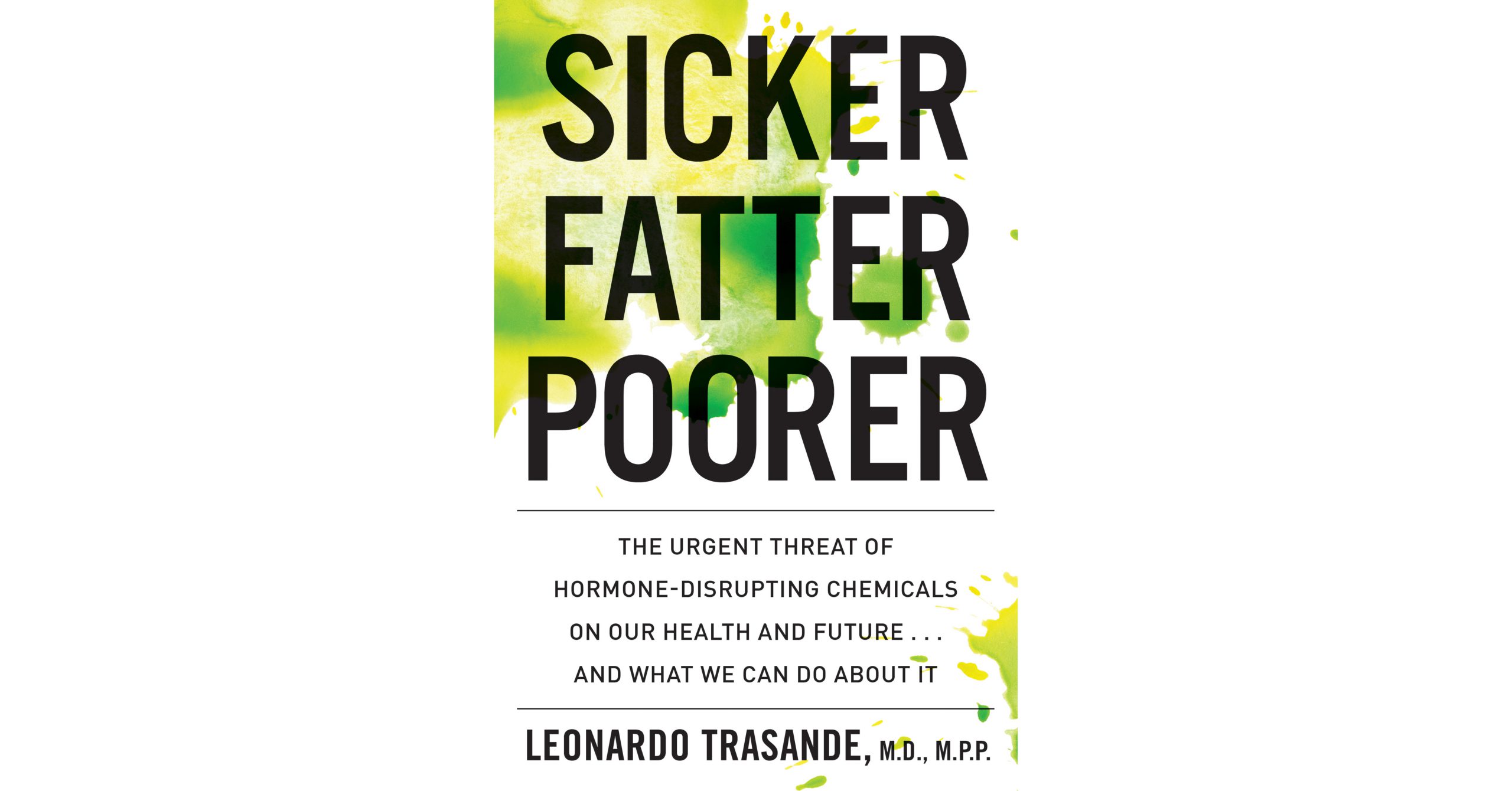Dr. Leo Trasande is a leading voice in public health policy and a top environmental medicine scientist. In a newly published book, he reveals the alarming truth about how hormone-disrupting chemicals like phthalates and flame retardants are affecting our daily lives—and what we can do to protect ourselves and fight back.
“Sicker, Fatter, Poorer: The Urgent Threat of Hormone-Disrupting Chemicals to Our Health and Future . . . and What We Can Do About It” exposes the chemicals that disrupt our hormonal systems and damage our health in irreparable ways. But it also tells the story of what we can all do to safeguard our health from toxic chemicals.
To learn more, read our Mind the Store campaign director Mike Schade’s interview with Dr. Trasande below. For the full story, pick up a copy of the book at your favorite local bookstore!
What inspired you to write your new book “Sicker, Fatter, Poorer: The Urgent Threat of Hormone-Disrupting Chemicals to Our Health and Future . . . and What We Can Do About It”?
Endocrine disrupting chemicals contribute to conditions that affect 99% of us – obesity, diabetes, infertility, cognitive deficits, autism, attention deficit hyperactivity disorder, endometriosis and fibroids. Yet 1% of us know about synthetic chemicals that scramble the basic and natural molecular signals our body uses to maintain body temperature, metabolism, salt, sugar and even sex. I wrote the book to empower the public with the information about the effects these chemicals can have and what they can do about it.
Many people were first awoken to the dangers of endocrine disrupting chemicals (EDC’s) when dangerous chemicals like DDT, Agent Orange (dioxin), and PCB’s were brought to public attention in the 1960s and 1970s. They weren’t referred to as endocrine disruptors back then but they are now classic examples of them. What have we learned about EDC’s since then? What’s changed?
We used to think endocrine disruption only had consequences at very high levels of exposure. Now we realize that synthetic chemicals can scramble molecular signals at much lower levels of exposure. The dose does not necessarily make the poison. Each day we find new examples of chemicals that have the greatest effects at the lowest levels of exposure.
What are some examples of EDCs that concern you the most and why? Where can they be found?
There are over 1000 synthetic chemicals that have been identified as EDCs. The evidence is strongest for four categories of chemicals – pesticides used in agriculture; flame retardants used in furniture, electronics and carpeting; bisphenols used in aluminum cans and thermal paper receipts, and phthalates used in cosmetics, personal care products and food packaging.
Information about toxic chemicals can be overwhelming. What are some simple steps that consumers can take to protect themselves and their families in their homes to reduce their exposure to EDCs?
There are safe and simple steps we can all take to limit exposure to EDCs, and they neither require a PhD in Chemistry nor break the bank.
Studies suggest that stopping canned food consumption can decrease bisphenol levels in urine as much as 90% or more. Also, say no to paper receipts. Most supermarkets are switching to electronic receipts that can avoid contact with the coating that contains BPA.
You should also be careful with your cosmetics. Look at the ingredient label and avoid products with “fragrance” or phthalates. A recent study found that choosing personal care products that are labeled to be free of phthalates, parabens and other endocrine disrupting chemicals can reduce exposure by as much as a third or more.
You can also limit phthalate and other problematic chemical exposures by looking at the recycling number on plastic bottles. Avoid the numbers 3, 6 and 7. You should also avoid washing plastic in the dishwasher, and hand wash with mild soap and water instead. If plastic food containers are etched, it’s time to throw them away. Etching increases the odds of leaching.
Finally, eating organic reduces your exposure to pesticides. Studies have proven this across the income spectrum. The cost margins for organic versus conventional foods are narrowing such that big-box stores are even carrying organic fruits, vegetables and meats now. In particular, keep in mind EWG’s Dirty Dozen, a group of fruits and veggies that are especially vulnerable to absorbing chemicals and therefore pose a greater risk when you buy “conventional” rather than organic produce.
We often say you can’t shop our way out of these problems. We need policy solutions, at the local, state, federal and international level, and from corporate decision-makers like big retailers and brands. What role do you think the business community and government should play in safeguarding the public from EDC’s?
There’s a role for regulation but remember that manufacturers do listen when consumers rise up and insist on safer products. A major driver of the ban on BPA in baby bottles and sippy cups was the outcry from mothers who spoke up. More recently, a study of five grocery retailers drove two of the nation’s largest supermarket chains to get rid of Teflon-like compounds found in food packaging and food contact materials.
Leonardo Trasande, MD, MPP is Jim G. Hendrick, MD Professor of Pediatrics, and directs the NYU Center for the Investigation of Environmental Hazards. He is the author of “Sicker, Fatter, Poorer: The Urgent Threat of Hormone-Disrupting Chemicals to Our Health and Future . . . and What We Can Do About It.”





